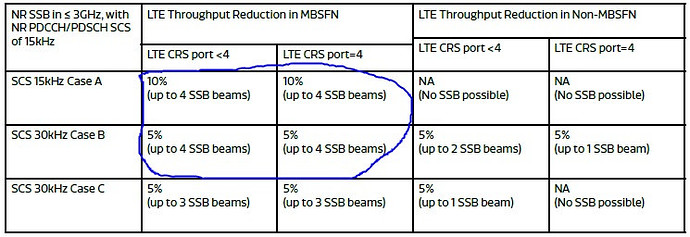Hi All,
Why there is less degradation in LTE throughput when we use SCS30 for SSB compared to SCS 15 KHz?
Because when we use MBSFN subframe for SSB, that whole subframe is not available for LTE PDSCH. So how does it matter what SCS we use for NR SSB?
Interesting.
Could this be related to lesser interference with LTE PDSCH?
There must be some explanation in Hedex why Huawei thinks there will be any LTE throughput in MBSFN frame assigned to 5G.
For SCS15 KHz we can use RE level rate matching whereas SCS30 KHz we use only RB level rate matching, reason is might be because of different SCS as compare to LTE to avoid sync channel collisions.
Also when we use RE level rate matching we have more no of REs available for scheduling as compare to RB level rate matching (according to LTE CRS port configuration). Only this is the difference I remember. But not sure others can confirm.
Also when this 30khz SCS SSB is transmitted other LTE symbols or subframe is muted here to avoid reference signal collision as you said.
Yes.
RB level rate matching can surely affect throughput.
But synch channel may not be the reason, because LTE synch channels are transmitted in subframe 0 and 5 in FDD.
And mbsfn subframe cannot be there in 0 and 5.
Anyways thank for your valuable input.
Which Hedex is this table from? I cannot find it in 3.0 or 3.1…
Assuming 4 SSB beams, you need double the MBSFN subframes in case A compared to case B and hence double the reduction in LTE throughput
For case of 1 or 2 beams, case A should be 5% as well
The reason of case B better than case A is definitely due to SCS 30 KHz itself has better throughput than SCS 15khz, considering for DSS SCS30 KHz has penalty due to guard band being there tackling asynchronous with LTE.
NR SCS 30 KHz numerology should be throughput beneficial since its half time slot, short latency for efficient traffic scheduling, and NR’s gain over LTE is enlarged.
